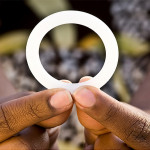A trio of studies has shed new light onto why young women in South Africa have such high rates of HIV infection and how to help prevent the spread of the virus in women worldwide. North American and South African researchers from the Centre of the AIDS Programme of Research in South Africa (CAPRISA) consortium presented findings on their studies of HIV transmission in young South African women at the 21st International AIDS Conference in Durban, South Africa (AIDS 2016).
In one study, the investigators conducted genetic analyses of 1,589 HIV-positive South Africans in a study of 9,812 individuals. They found that HIV transmission among adolescent girls and young women is driven by their sexual relations with men who are an average of eight years older. Many of these men also had female partners about their same age, a group with an HIV prevalence greater than 60 percent.
Another study involved a genetic analysis of vaginal bacteria in 119 South African women. The scientists found that those with high amounts of the bacterium Prevotella bivia had a nearly 13-fold greater risk of contracting HIV than those with either low or nonexistent levels of the bacterium. Their research suggested that the bacterium might elevate HIV risk through its emission of a molecule that stimulates inflammation: lipopolysaccharide, or LPS. Inflammation apparently raises the risk of HIV acquisition, by, for one, increasing the number of immune cells the virus targets for infection.
In the third study, of the Viread (tenofovir disoproxil fumarate, or TDF) HIV prevention gel, the researchers analyzed 3,334 bacterial proteins taken from 688 women’s vaginas. Those with a healthy bacterial population dominated by the lactobacillus bacterium were protected from HIV by the gel. The women who did not have such a lactobacillus-dominant bacterial population, on the other hand, gained little protection from the gel. The researchers believe a reason for this difference is that the bacterium Gardnerella vaginalis, which is dominant when lactobacillus levels are low, absorbs the Viread and ultimately reduces its effectiveness in preventing HIV.
Both P. bivia and G. vaginalis raise pH levels in the vagina. Consequently, a simple, inexpensive test can tell whether women need treatment for an imbalance in their vaginal bacteria, known as bacterial vaginosis. Such testing and treatment could help slow the spread of HIV among women worldwide.
To read a press release about the study, click here.







Comments
Comments